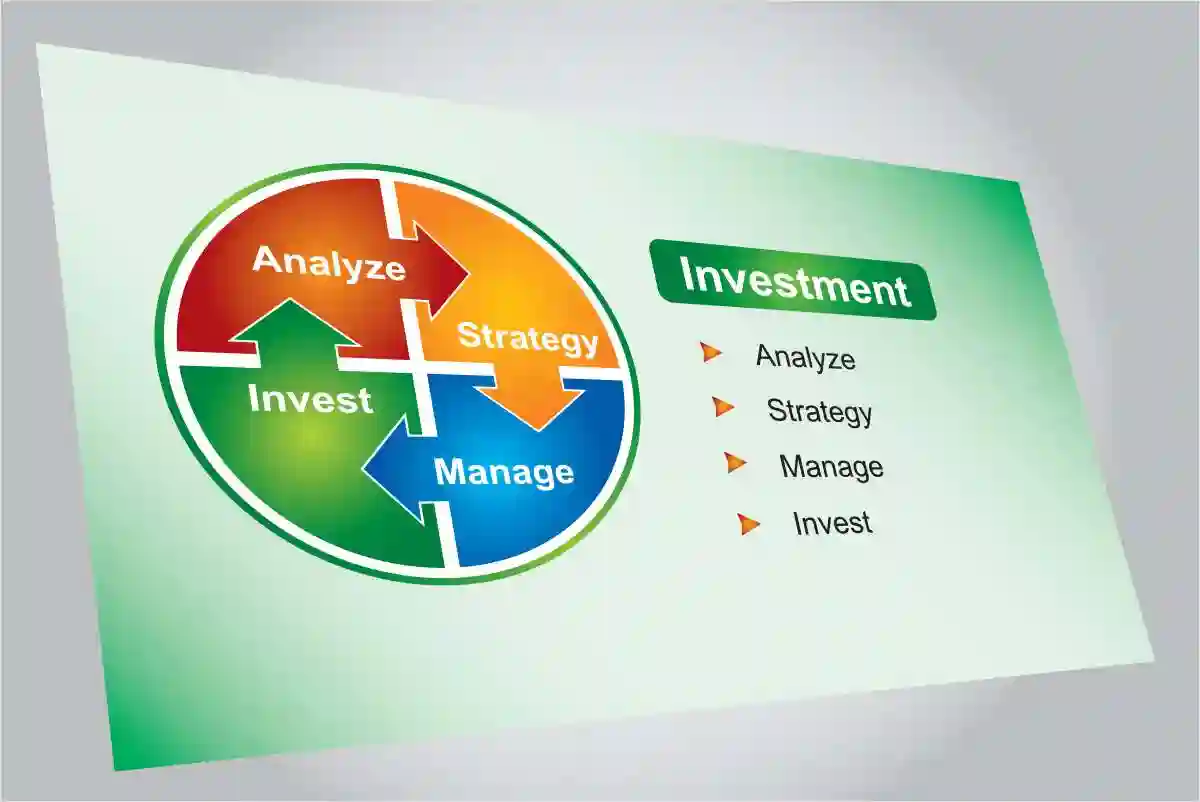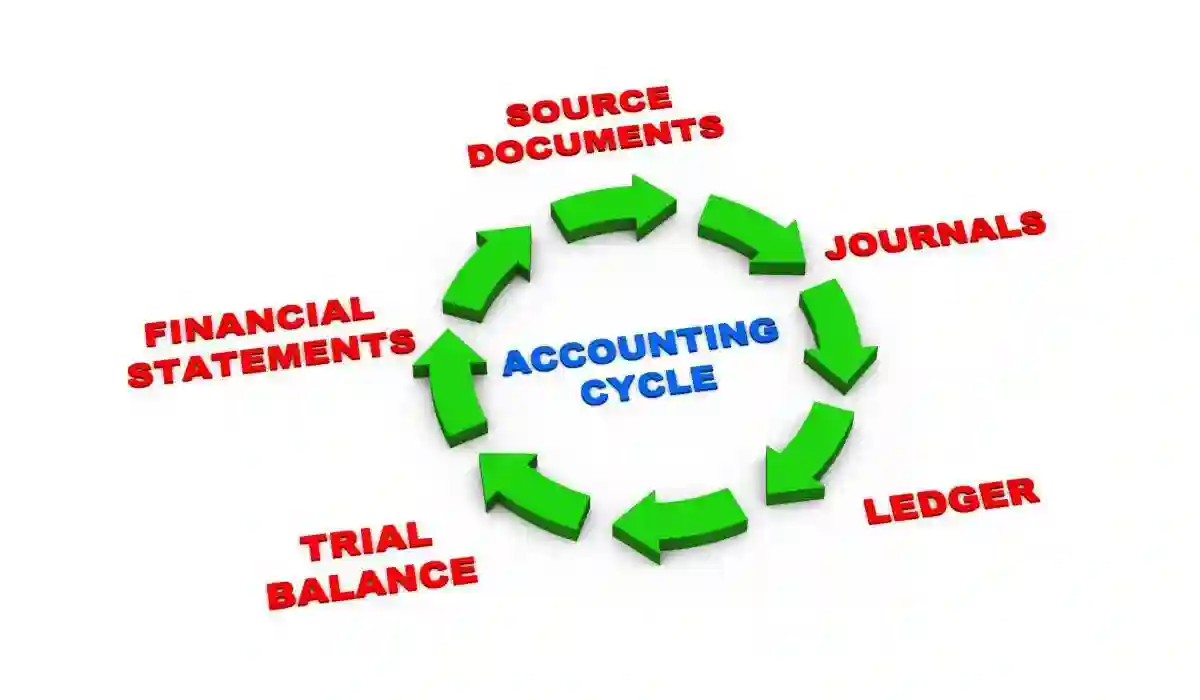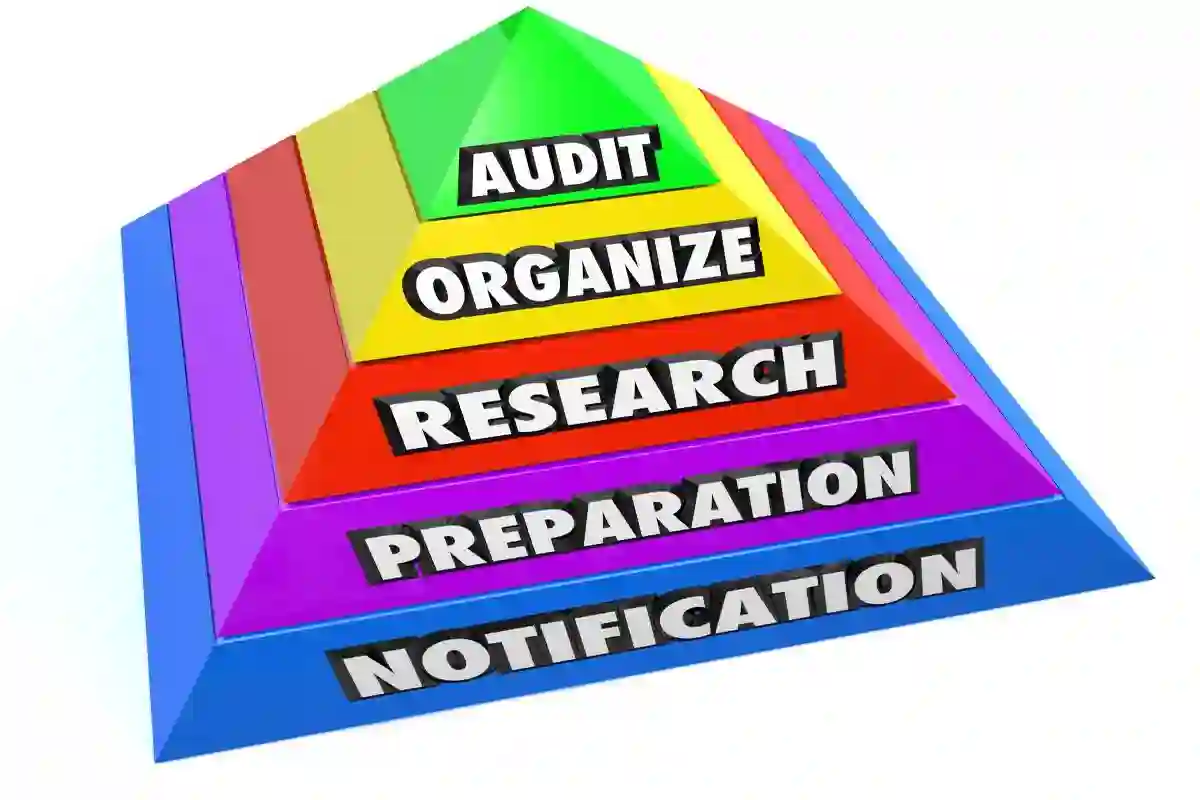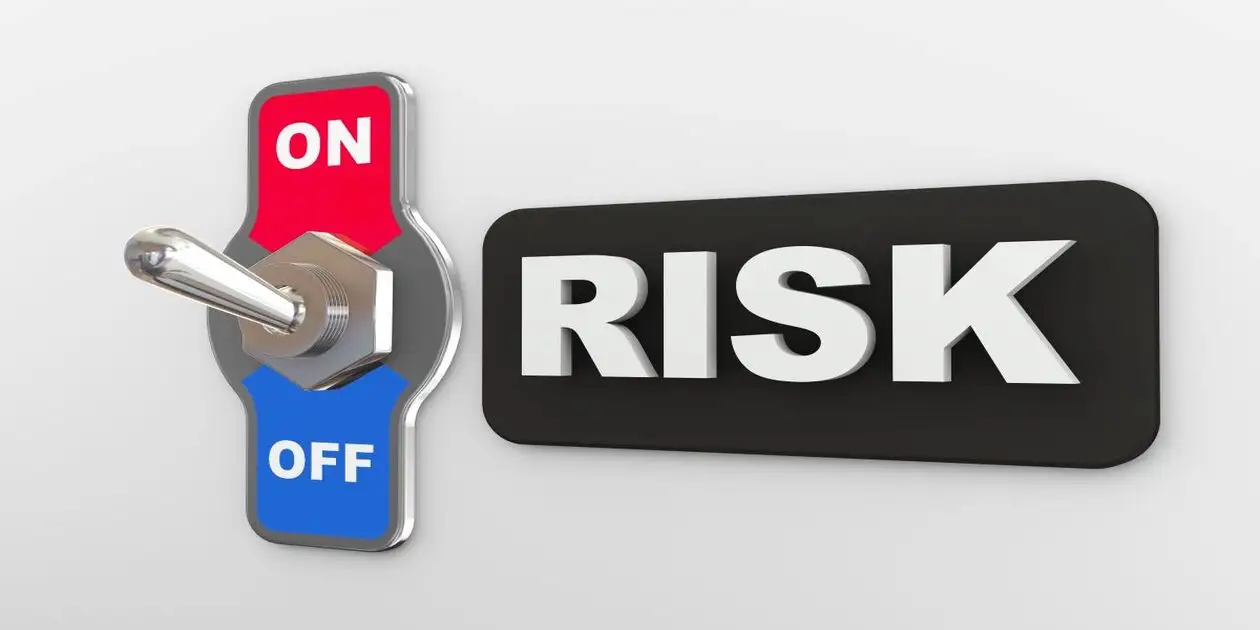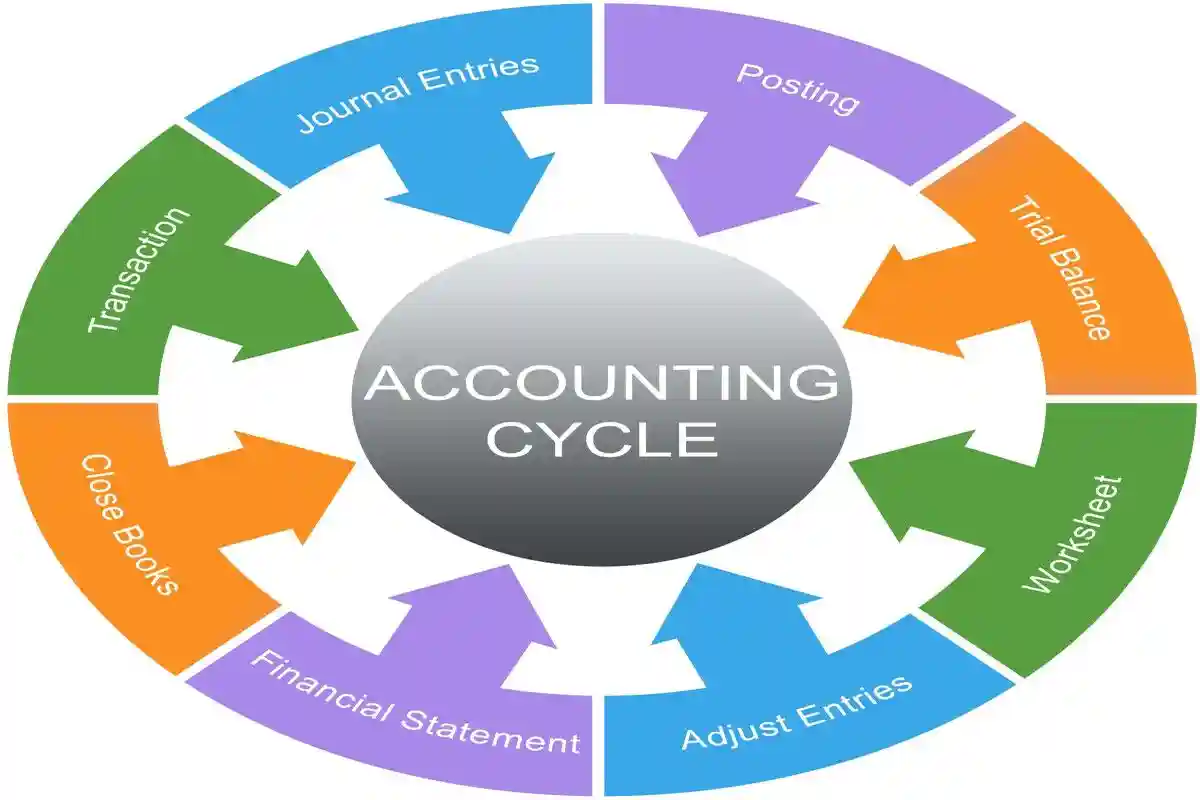Introduction to Securities Litigation Procedure
- Securities Litigation Procedure: Process begins with a plaintiff drafting and filing a complaint that details the alleged securities law violations and their legal basis.
- Answer: After the complaint is filed, defendants respond, and a discovery period ensues for exchanging information and evidence
- Settlement: Many cases are resolved through settlement or arbitration, while those that aren’t may proceed to trial, where a judge or jury makes a final decision.
- Securities Litigation: Involves legal disputes over the purchase and sale of securities like stocks and bonds, often stemming from violations of securities laws.
- Types of Cases: These cases can include class actions, insider trading, fraud, and market manipulation, and are designed to ensure fairness and accountability in financial markets.
- High-Stakes Litigation: The process can be complex and high-stakes, involving significant financial implications for corporations and investors.
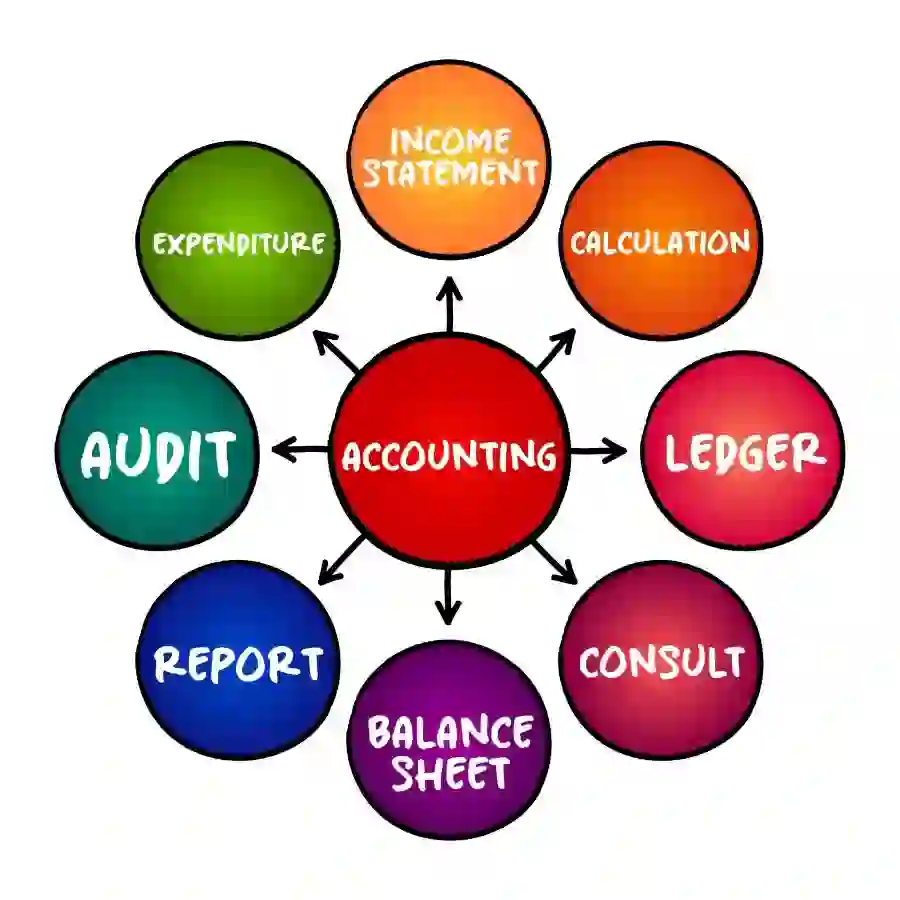 Purpose and Legal Basis
Purpose and Legal Basis
- Definition: Securities litigation is a specialized area of law that deals with disagreements arising from the buying and selling of securities.
- Purpose: It aims to protect investors from deceit, fraud, and other breaches in financial markets by ensuring transparency, fairness, and accountability.
- Legal Basis: Cases can be based on either federal or state securities laws.
Common types of cases
- Securities Class Action: Lawsuits filed by groups of investors who suffered economic loss after buying or selling securities within a specific period, often due to misleading information.
- Insider Trading: Trading a public company’s securities using non-public, material information.
- Market Manipulation: Artificially inflating or deflating a security’s price to deceive investors.
- Fraud: Presenting false information or withholding material facts that deceive investors.
- Regulatory Proceedings: Legal actions brought by regulatory bodies like the Securities and Exchange Commission (SEC).
The Litigation Process
- Pleadings: The initial stage where a lawsuit is filed by the plaintiff.
- Discovery: A phase where both sides gather information from each other through legal means.
- Motions/Trial: After discovery, cases may be resolved through a motion for summary judgment, or go to trial if a settlement is not reached.
Impact on Companies
- Financial costs: These cases can result in substantial financial losses and settlement costs.
- Reputational damage: Litigation can negatively impact a company’s reputation and public image.
- Management distraction: Lawsuits can be a significant distraction for company management.
Understanding Securities Litigation
- Investor Disputes: These disputes often arise when investors believe they have been wronged due to misleading statements, omissions, or fraudulent activities that affect the value of securities.
- Complex: As financial markets have become more sophisticated, the complexity of securities litigation has increased. Understanding the nuances of this legal arena is essential for investors who wish to safeguard their interests.
- Potential for Significant Settlement: The stakes in securities litigation are high, with potential financial recoveries or losses impacting individuals and corporations alike.
- The Process: The process of securities litigation can be intricate, involving multiple parties, extensive documentation, and a deep understanding of both legal and financial principles. It typically begins with an investor suspecting wrongdoing, which could be due to a sudden drop in stock prices or other anomalies in financial reports.
- Litigation: From this point, the wheels of litigation begin to turn, involving legal counsel, regulatory bodies, and sometimes, the courts. Each step requires careful navigation to ensure that claims are substantiated and that justice is served.
- Securities Litigation Acts as a Deterrent: Given the potential for significant financial repercussions, securities litigation also acts as a deterrent against corporate misconduct. Companies are acutely aware that any misstep could lead to costly legal battles and damage to their reputation.
- Transparency and Accountability: This awareness promotes a culture of transparency and accountability within firms, encouraging them to adhere strictly to financial regulations and ethical business practices. However, despite these deterrents, cases of securities violations continue to surface, underscoring the need for vigilant enforcement and an informed investor base.
Common Causes of Securities Litigation
- Triggers: A variety of factors can trigger securities litigation, with the most common being allegations of fraud or misrepresentation.
- Misleading Investors: These claims often revolve around a company misleading investors about its financial health or prospects. Such misrepresentations can occur through false financial statements, overinflated earnings reports, or failing to disclose material information that could affect an investment’s value or other accounting fraud.
- Investor Losses: Investors who suffer losses as a result of these actions may seek legal recourse through securities litigation.
- Insider Trading: Another frequent cause of securities litigation is insider trading, where individuals with access to non-public information about a company use that knowledge to buy or sell securities, thereby gaining an unfair advantage over other investors.
- Unethical Practice: This practice is not only unethical but also illegal, as it undermines investor confidence and disrupts the fairness of the financial markets.
- Regulatory Bodies: Such as the Securities and Exchange Commission (SEC), actively monitor and prosecute cases of insider trading to maintain market integrity.
Breach of Fiduciary Duty
- Breach of Fiduciary Duty: Additionally, securities litigation can arise from breaches of fiduciary duty, where corporate officers or directors fail to act in the best interest of their shareholders.
- Conflicts of Interests: This could involve conflicts of interest, self-dealing, or other actions that compromise the trust placed in them by the investors.
- Legal Action: Such breaches can lead to legal actions aimed at holding these individuals accountable and recovering any financial losses suffered by the shareholders. Understanding these common causes is crucial for investors and companies alike to prevent involvement in costly litigation.
The Role of Accounting Fraud in Securities Litigation
- Accounting Fraud: Plays a significant role in many securities litigation cases. It involves the deliberate manipulation of financial statements to present a misleading picture of a company’s financial performance or condition.
- Schemes to Hide True Value: This can include overstating revenues, understating liabilities, or employing creative accounting techniques to obscure the true financial state of a business.
- Artificially Inflated: Stock: Such actions can lead to inflated stock prices, which eventually plummet when the true financial situation comes to light, leaving investors with substantial losses.
Consequences of Accounting Fraud
- Consequences: The consequences of accounting fraud are far-reaching, affecting not only the investors but also the broader financial market.
- Erodes Investor Trust: When fraudulent activities are uncovered, they can lead to drastic declines in stock prices, erode investor confidence, and trigger regulatory investigations.
- Severe Penalties: Companies implicated in accounting fraud may face severe penalties, including fines, sanctions, and reputational damage, which can have long-term impacts on their operations and market standing.
- Securities Litigation: Therefore, addressing accounting fraud is a critical component of securities litigation, with legal proceedings often focusing on uncovering and rectifying these deceptive practices.
- Regulatory Bodies: To combat accounting fraud, regulatory bodies have implemented stringent reporting standards and compliance requirements.
Transparency or Securities Litigation
- Accurate and Transparent Financial Records: Companies are expected to maintain accurate and transparent financial records, with auditors playing a crucial role in verifying the integrity of these reports.
- Robust Internal Controls: Despite these measures, some entities continue to engage in deceptive accounting practices, necessitating vigilant oversight and robust legal frameworks to protect investors and uphold market integrity.
- Securities Litigation Is a Powerful Tool: In this context, securities litigation serves as a powerful tool to deter and penalize accounting fraud, reinforcing the importance of ethical financial reporting.
Detailed Summary Table Outlining the Economic, Operational,
And Legal Frameworks for Securities Class Actions
Category | Key Elements | Practical Implications | Recent Developments | |
| Economic | ||||
| Corporate Financial Impact | • Legal fees and defense costs • Settlement payments • Penalties and fines • Remediation expenses | • Direct reduction in profitability • Potential stock price decline • Impact on shareholder value • Financial statement disclosures | • Average settlement amounts increased 15% in 2023 • Defense costs typically range from $2-8M per case | |
| Operational Disruption | • Management distraction • Document production burden • Internal investigation requirements • Testimony preparation | • Reduced focus on core business • Resource reallocation • Strategic initiative delays • Compliance program overhauls | • Companies now spend average of 1,200+ hours on litigation response • 68% of executives report significant operational impact | |
| Investor Recovery Mechanism | • Class action procedures • Out-of-pocket damages • Lead plaintiff selection • Claims administration | • Financial loss compensation • Transaction-based calculations • Pro-rata distribution • Claims filing requirements | • Recovery rates average 2-3% of investor losses • Institutional investors recover higher percentages | |
| Market Confidence Effects | • Transparency enhancement • Accountability mechanisms • Governance improvements • Disclosure quality | • Investor trust restoration • Market participation incentives • Capital formation support • Information reliability | • Post-litigation governance reforms implemented in 72% of settled cases • Measurable improvements in disclosure quality | |
| Current Trends | ||||
| Individual Accountability Focus | • Officer and director liability • Personal financial consequences • Clawback provisions • D&O insurance implications | • Executive behavior modification • Personal risk assessment • Compliance prioritization • Leadership accountability | • 64% increase in named individual defendants • Personal contributions to settlements up 28% | |
| Technology-Enhanced Detection | • AI-powered surveillance • Advanced analytics • Pattern recognition • Anomaly detection | • Increased violation detection • Stronger evidence collection • More sophisticated cases • Higher success rates | • SEC using machine learning to identify disclosure anomalies • 42% of new cases involve technology-detected violations | |
| Litigation Process Modernization | • E-discovery platforms • Digital evidence management • Virtual proceedings • Automated document review | • Faster case processing • Cost efficiency improvements • Enhanced evidence organization • Remote participation | • 87% reduction in document review time • 35% decrease in litigation costs through technology | |
| Cross-Border Complexity | • Jurisdictional challenges • Regulatory differences • Enforcement coordination • International evidence gathering | • Multi-jurisdiction compliance • Global risk assessment • Harmonized defense strategies • International settlement considerations | • 38% of securities cases now involve cross-border elements • International regulatory cooperation agreements expanded | |
| Legal Frameworks | ||||
| Pleading Standards | • PSLRA requirements • Scienter (intent) showing • Particularity in allegations • Strong inference threshold | • Higher dismissal rates • Front-loaded case investment • Detailed complaint preparation • Expert involvement earlier | • Macquarie Infrastructure Corp. v. Moab Partners (2024) reshaped omission standards • Motion to dismiss success rate at 47% | |
| Loss Causation Elements | • Corrective disclosure • Price impact evidence • Economic analysis • Event studies | • Causal chain demonstration • Market efficiency proof • Expert testimony requirements • Damages limitation | • Dura Pharmaceuticals v. Broudo remains controlling precedent • Increasing sophistication in economic analyses | |
| Damages Calculation | • Out-of-pocket methodology • Inflation per share • 90-day lookback period • Transaction-based approach | • Expert-driven calculations • Trading pattern importance • Holding period considerations • Proportional recovery | • Forensic accounting techniques increasingly sophisticated • Competing damages models in 92% of cases | |
| Class Certification | • Commonality requirements • Typicality standards • Adequacy of representation • Predominance of common issues | • Class definition strategies • Lead plaintiff selection • Institutional investor preference • Certification challenges | • Institutional investors serve as lead plaintiffs in 58% of cases • Class certification contested in 94% of cases | |
| Investor Considerations | ||||
| Participation Decision Factors | • Loss threshold assessment • Lead plaintiff potential • Litigation timeline • Cost-benefit analysis | • Active vs. passive participation • Resource commitment evaluation • Recovery expectations • Reputational considerations | • Minimum loss threshold for lead plaintiff typically $100K+ • Average case duration now 3.2 years | |
| Recovery Optimization | • Claims filing procedures • Documentation requirements • Deadline adherence • Distribution mechanics | • Proof of transaction needs • Claims administrator interaction • Recovery maximization strategies • Tax implications | • Only 35% of eligible investors file claims • Electronic claim filing now standard | |
| Governance Implications | • Board oversight duties • Disclosure controls • Risk management systems • Compliance programs | • Director liability concerns • Committee responsibilities • Reporting procedures • Documentation practices | • Board-level disclosure committees now present in 78% of public companies • Director education programs expanded | |
| Future Participation Rights | • Opt-out considerations • Individual action potential • Settlement objection rights • Appeal possibilities | • Strategic participation choices • Large loss alternative approaches • Settlement evaluation • Ongoing case monitoring | • Opt-out actions by large investors increased 47% • Settlement objections successful in only 3% of cases |
REPUTATIONAL AND FINANCIAL CONSEQUENCES OF FRAUD
Impact Assessment of Financial Statement Fraud
| Impact Category | Measurement | Severity |
|---|---|---|
| Stock Value Loss | 12.3-20.6% average decline | High |
| Reputational Damage | Up to 100x direct financial loss | Severe |
| Employee Impact | 50% loss in cumulative wages | Severe |
| Legal Penalties | $750M+ in major cases | High |
| Bankruptcy Risk | 3x higher than non-fraud firms | High |
| Market Recovery | Years to decades, if ever | Variable |
| Customer Trust | Immediate and often permanent loss | Severe |
| Investment Access | Permanently impaired in many cases | High |
THE SECURITIES LITIGATION PROCESS
| Filing the Complaint | A lead plaintiff files a lawsuit on behalf of similarly affected shareholders, detailing the allegations against the company. |
| Motion to Dismiss | Defendants typically file a motion to dismiss the securities class action lawsuits, arguing that the complaint lacks sufficient claims. |
| Discovery | If the motion to dismiss is denied, both parties gather evidence, documents, emails, and witness testimonies. This phase of securities litigation can be extensive. |
| Motion for Class Certification | Plaintiffs request that the court to certify the securities litigation as a class action. The court assesses factors like the number of plaintiffs, commonality of claims, typicality of claims, and the adequacy of the proposed class representation. |
| Summary Judgment and Trial | Once the class is certified, the parties may file motions for summary judgment. If the securities litigation is not settled, it proceeds to trial, which is rare for securities class actions. |
| Settlement Negotiations and Approval | Most securities litigation cases are resolved through settlements, negotiated between the parties, often with the help of a mediator. The court must review and grant preliminary approval to ensure the settlement is fair, adequate, and reasonable. |
| Class Notice | If the court grants preliminary approval, notice of the settlement in the securities litigation is sent to all class members in the securities litigation, often by mail, informing them about the terms and how to file a claim. |
| Final Approval Hearing | The court conducts a final hearing to review any objections and grant final approval of the settlement of the securities litigation. |
| Claims Administration and Distribution | A court-appointed claims administrator manages the process of sending notices, processing claims from eligible class members, and distributing the settlement funds. The distribution is typically on a pro-rata basis based on recognized losses. |
Red Flags for Accounting Fraud
- Inconsistent financial trends: Revenue, expenses, or other metrics that don’t align with industry benchmarks, economic conditions, or the company’s operational reality.
- Unusual transactions: Payments to unfamiliar vendors, large wire transfers with vague descriptions, or an excessive number of voids, returns, or other modifications.
- Last-minute adjustments: Significant journal entries made at the end of a reporting period, especially those that improve financial performance.
- Missing or altered documentation: Missing invoices, altered receipts, or a lack of supporting records for transactions.
- Discrepancies: Differences between bank deposits and account postings, or customer/vendor statements that don’t match internal records.
- Changes in accounting methods: Abruptly changing accounting methods or having difficulty explaining variances in financial ratios.
- Increased expenses/reimbursements: An unusual volume of expense claims or reimbursements, particularly when processed by a single individual.
Internal Controls and Operational Red Flags
- Lack of segregation of duties: One person controls too many aspects of a financial process, such as handling payments, reconciling accounts, and approving invoices.
- Weak control environment: Lax or ineffective internal controls, a lack of documented policies and procedures, or an inability or unwillingness to take vacations.
- Missing documentation: Deliberate removal or failure to keep proper records and receipts.
- Pressure to meet targets: Intense pressure to achieve unrealistic financial goals.
- Inadequate audits: Low audit costs compared to industry standards or a change of auditors before the end of a contract.
Behavioral Red Flags
- Lifestyle beyond means: Living an extravagant lifestyle that cannot be supported by their salary or known income.
- Poor work habits: Unwillingness to take vacation, share duties, or provide necessary information when asked.
- Unusual relationships: An unusually close relationship with a vendor or customer, which could indicate a conflict of interest.
- Control issues: Excessive control over a job or a general “wheeler-dealer” attitude.
- Defensiveness: Increased irritability, suspiciousness, or defensiveness when questioned about their work or finances.
Internal Controls: Preventing Securities Violations
- Internal Controls: are essential mechanisms that companies implement to ensure the integrity of their financial and operational processes.
- Prevent Fraud: These controls are designed to prevent errors, fraud, and non-compliance with applicable laws and regulations. Effective internal controls are crucial in the context of securities litigation, as they help prevent the occurrences that often lead to such legal actions.
- Robust Internal Controls: By establishing robust internal controls, companies can mitigate the risk of financial misreporting and enhance their ability to detect and address potential issues before they escalate.
- A Comprehensive Internal Control System: Typically includes a range of policies and procedures that cover various aspects of a company’s operations.
You Must Be Proactive
- Segregation of Duties: This can involve segregation of duties to prevent conflicts of interest, regular audits to verify financial accuracy, and stringent approval processes for significant transactions.
- Whistleblower Programs: Additionally, companies often implement whistleblower programs to encourage employees to report unethical or illegal activities without fear of retaliation. These measures are designed to create an environment of transparency, accountability, and ethical conduct within the organization.
- Lapses: Despite the implementation of internal controls, lapses can still occur, sometimes due to inadequate oversight or deliberate circumvention by individuals within the organization.
- Continuous Monitoring: This underscores the importance of continuous monitoring and improvement of internal control systems to adapt to evolving risks and regulatory requirements.
- Proactive: Companies that proactively manage their internal controls are better positioned to prevent securities violations and the subsequent legal and financial consequences.
- Internal Controls Framework for Investors: For investors, understanding a company’s internal control framework can provide valuable insights into its risk management practices and overall governance.
Prevention strategies
To protect against financial statement fraud, companies can implement a range of internal controls and foster an ethical corporate culture.
- Implement strong internal controls: Enforce a strict segregation of duties, so that no single person controls all aspects of a financial transaction, and protect accounting systems with strong access controls.
- Set an ethical “tone at the top”: Management should lead by example, demonstrating ethical behavior and a commitment to integrity and transparency.
- Perform regular audits: Conduct both independent external and internal audits to regularly test financial statements for accuracy and uncover weaknesses in internal controls.
- Establish a whistleblower program: Create a formal, anonymous reporting system for employees to safely report suspicious activities without fear of retaliation.
- Limit performance-based bonuses: Be cautious about tying executive compensation too closely to short-term financial targets, which can incentivize reckless or fraudulent behavior.
Maintaining Financial Integrity
Robust Internal Controls: Requires a robust framework of internal controls and corporate governance practices.
- Ensures Compliance: Companies must ensure that their financial statements are accurate, complete, and compliant with relevant accounting standards.
- Motivation: This involves regular audits, both internal and external, to identify and rectify any discrepancies or irregularities in financial reporting.
Implementing Robust Internal Controls
Segregation of duties
The lack of proper segregation of duties is one of the most common internal control weaknesses leading to asset misappropriation. It allows a single individual to have control over incompatible functions, giving them both the means and the opportunity to commit and conceal fraud.
- Incompatible duties involve having responsibility for two or more of the following key functions:
- Authorization: Approving a transaction
- Custody: Handling the physical asset (cash, inventory)
- Record-keeping: Entering the transaction into the accounting system
- Reconciliation: Comparing records to physical assets or bank statements
- Example: If one employee is responsible for receiving cash payments, recording the payment in the accounting system, and reconciling the bank statement, they could easily take cash and cover it up by altering the records.
Management and oversight
A lax management approach or poor “tone at the top” creates an environment where unethical behavior can thrive.
- Inadequate supervision: Weak monitoring of employees and business processes, especially in remote locations, allows fraudulent activity to go unnoticed.
- Ineffective management review: If managers do not regularly review and approve transactions, it creates an opportunity for employees to hide fraudulent activity.
- Management override of controls: Senior leaders can bypass established internal control policies to achieve business goals or for personal gain, sending a message that controls can be ignored.
- Poor hiring practices: Inadequate background checks or screening for employees with access to assets can allow individuals with financial or behavioral red flags to be hired.
Physical and information safeguards
A failure to secure company assets, both physical and digital, creates a direct opportunity for theft.
- Inadequate physical controls: Not locking up cash or valuable assets, using poorly guarded storage areas, or failing to restrict access to secure areas allows employees to easily steal inventory, equipment, or cash.
- Weak access controls: Insufficient or poorly monitored access to sensitive computer systems, data, and electronic records can lead to information theft or the creation of fraudulent transactions.
Recording and documentation
Weaknesses in an organization’s record-keeping procedures can be exploited to commit and conceal fraud.
- Poor record keeping: Missing or inaccurate documentation, such as invoices, receipts, or shipping records, makes it difficult to trace transactions and compromises the audit trail.
- Lack of independent checks: Not performing regular, independent reconciliations of assets and accounts, such as bank statements, can allow discrepancies to go undetected.
- Failure to enforce mandatory vacations: Fraudulent schemes are often discovered when the perpetrator is on vacation and another employee takes over their duties. Without mandatory time off, fraudsters can maintain their schemes for longer periods.
Technology and automation
An outdated or poorly managed technology infrastructure can be a source of internal control weaknesses.
- Insufficient use of automation: Relying heavily on manual processes creates more opportunities for human error and intentional fraud.
- Failure to update technology: Outdated systems can lack the security features and automated controls needed to protect against modern threats.
- Poorly integrated systems: Disjointed or non-integrated software systems can create gaps that allow fraudulent transactions to slip through undetected.
A poor “tone at the top” is a key driver of asset misappropriation because it erodes the ethical foundation of an organization and undermines the control environment. The attitude and actions of senior management and the board of directors set the standard for employee behavior. When that tone is weak, it creates opportunities for fraud through several mechanisms.
Management override of controls
Senior management has the authority to circumvent or override the very internal controls that are designed to prevent fraud. A poor tone at the top may manifest as a deliberate disregard for these safeguards to achieve financial goals or for personal gain.
- Rationalizing shortcuts: Managers who feel pressure to meet unrealistic financial targets may override controls under the guise of efficiency or speed. Employees observe this behavior and may interpret it as permission to do the same.
- Influencing accounting staff: High-level managers can coerce accounting staff into making questionable journal entries or transactions to hide theft. Staff may comply out of loyalty, fear of losing their job, or the belief that the manager is more trustworthy than the official policy.
- Hiding theft through authority: Management can use its authority to write off receivables or inflate revenue, which can be a way of concealing asset misappropriation. These overrides are hard to detect because they are performed by individuals with high levels of system access and authority.
Normalization of unethical behavior
When leaders behave unethically or tolerate it from others, it sends a message that integrity is not a priority. This can normalize fraudulent behavior throughout the organization.
- “They’re doing it too”: Employees often take behavioral cues from their superiors. If employees see managers exaggerating expenses, taking company property for personal use, or tolerating minor infractions, they are more likely to justify their own dishonest actions with the rationalization, “upper management is doing it as well”.
- Rewarding results over ethics: If the company culture focuses exclusively on meeting aggressive targets, employees may feel intense pressure to cut corners. A manager’s focus on profits at all costs, with no regard for the process, can motivate employees to manipulate data or engage in fraud to avoid negative consequences.
Erosion of trust and control
A poor tone from management can break down the systems of trust and oversight that are vital for preventing fraud.
- Weakened whistleblower protections: A management team that ignores or retaliates against employees who report misconduct will destroy a company’s ethics hotline and encourage employees to remain silent. Since tips are the most common way fraud is detected, a poor tone effectively disables a key defense.
- Reduced morale and loyalty: Employees in an environment with low morale and a toxic culture feel less loyalty to the company and its goals. This reduces the rationalization barrier to committing fraud, as employees feel less guilt about hurting an organization that they feel has wronged them.
- Disregard for monitoring: When management does not take internal controls seriously, they are less likely to enforce monitoring activities, such as regular reconciliations or surprise audits. This increases the opportunity for fraud to occur and remain undetected.
The Consequences of Accounting Fraud
The results of a poor tone at the top extends beyond just revenue Recognition. It can lead to:
- Financial standing
- Asset misappropriation may not be the most expensive, but it can still significantly impact an organization’s financial standing in a significant way if you are not careful. One study from the ACFF found median loss for businesses that experience asset misappropriation is $120,000 per incident.
- Legal penalties
- Companies and the individuals involved can face substantial fines, regulatory sanctions from bodies like the SEC, and criminal charges, including imprisonment.
- Loss of investor confidence
- Accounting fraud erodes trust in the company and the broader market. This can cause stock prices to plummet, leading to significant losses for investors.
- Reputational damage
- An accounting fraud scandal can irreparably harm a company’s reputation, damaging its brand and making it difficult to attract customers, partners, and talent.
- Corporate collapse
- The exposure of sustained fraud can lead to financial instability, bankruptcy, and devastating losses for employees and shareholders. The collapse of Enron and WorldCom are two famous examples.
The Role of Securities Litigation in Addressing Accounting Fraud
- Securities Litigation: Serves as a critical mechanism for addressing cases of accounting fraud.
- Legal Avenue: Securities litigation provides a legal avenue for investors and other stakeholders to seek redress when they have been misled by fraudulent financial reporting.
- Securities litigation and Enforcement: Can take various forms, including class-action lawsuits, enforcement actions by regulatory bodies, and arbitration proceedings.
The Primary Objective of Securities Litigation
- Primary Objective: The primary objective of securities litigation is to hold companies and their executives accountable for fraudulent activities.
- Accountability: Securities litigation causers accountability can deter future misconduct by signaling to other market participants that unethical behavior will be met with legal consequences.
- Compensation: Additionally, securities litigation can result in financial compensation for affected investors, helping to restore some of the losses incurred due to misleading information.
Understanding the Role of Securities Litigation
- Securities Ligation Objective: Understanding the role of securities litigation is vital for both companies and investors.
- Companies: For companies, it underscores the importance of maintaining transparency and compliance with financial regulations.
- Investors For investors, it highlights the need for vigilance and due diligence in assessing the financial health of potential investments. By leveraging securities litigation, stakeholders can help uphold the integrity of financial markets.


